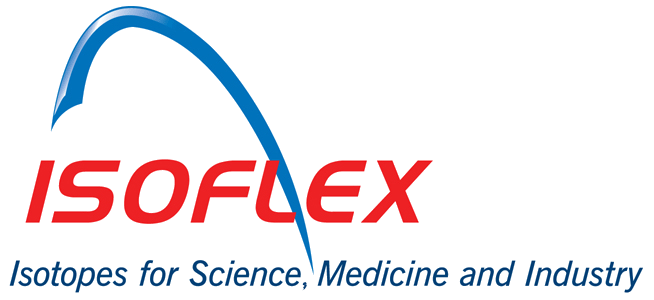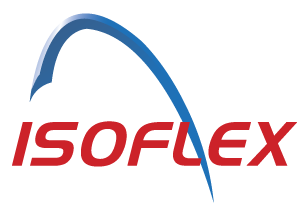Products
Selenium-75 (Se-75)
Selenium-75 (75Se)

Selenium-75 is an alternative to Iridium-192 for use in gamma radiography sealed sources. Selenium-75 sources provide certain performance benefits relative to Iridium-192 in non-destructive testing (NDT) of thinner-walled steel surfaces, as well as providing certain health and safety attributes. Selenium-75 provides a softer gamma ray spectrum than Iridium-192, and it has a significantly longer half-life: 120 days vs. 74 days.
ISOFLEX offers Selenium-75 either as primary inner capsules (PICs), with the customer taking responsibility for secondary encapsulation in accordance with its specific requirements, or as completed sources designed to customer specifications in industry-accepted configurations.
Sources are available in nominal activities from 30 to 120 curies. Selenium-75 sources offered by ISOFLEX contain a proprietary metal selenide composite for achieving optimum focal geometry.
Selenium-75 sources from ISOFLEX are available only under long-term contractual supply agreements. Contact us with your specific requirements.
Please click here for an excellent treatise on the benefits and applications of Selenium-75 sources in non-destructive testing.
Need a quote? Click here.
Nickel-64 (Ni-64)
Nickel-64 (64Ni)

ISOFLEX offers the highest-enriched Nickel-64 (Ni-64, 64Ni) in the world at >99.10%. High isotopic purity allows for maximum-yield production of Copper-64 (Cu-64, 64Cu) for your PET needs. Inventories are maintained in San Francisco for immediate delivery.
Due to its half-life and beta emission capabilities (T½ = 12.7 hours; β+, 0.653 MeV [17.8%]; β−, 0.579 MeV [38.4%]), Cu-64 is a promising radioisotope for both imaging and radiotherapy of cancer. In addition, copper chemistry is well defined, resulting in abundant options for linking (chelating) Cu-64 to proteins, antibodies, peptides and nanoparticles that target particular cell types and organs.
Copper-64 has a well-established carrier-free production route, 64Ni(p,n)64Cu, that can achieve high yields of 3-10 mCi/μAh and is effectively produced with cyclotrons ranging from 11MeV to 19MeV. Production of this radioisotope expanded globally in the last decade to include North America, Europe, Japan and other markets.
ISOFLEX offers Ni-64 as metal powder, allowing easy dissolution for electroplating on gold or rhodium platforms for mounting on targets.
There is an optimistic outlook for Ni-64/Cu-64 as a widespread PET agent offering high image quality and numerous superior chelation routes and processes. Cu-64 is currently included in clinical studies that predict prognosis and determine the behavior of invasive cancers in squamous cells.
64Cu-ATSM has been granted Investigational New Drug status by the U. S. Food and Drug Administration and is currently used in clinical studies of imaging hypoxia in cervical cancer. These and other studies have demonstrated that PET imaging with 64Cu-ATSM provides clinically relevant information about tumor oxygenation (chronic vs. acute) and is predictive of the likelihood of disease-free, post-treatment survival in patients with cervical cancer.
The future of Cu-64 is bright, and ISOFLEX is proud to support this PET advancement with the highest quality Ni-64 on the market.
Need a quote? Click here.
Iron-57
Iron-57 (57Fe)

Iron-57 (Fe-57) is a critical stable isotope for the scientific community. ISOFLEX routinely supplies >95% Fe-57 as metal (foil, discs, powder and ingot) and oxide (Fe2O3). At additional cost, we can supply Fe-57 as custom compounds and salts (nitrates, sulfates, etc.). We are ready to offer you the most competitive pricing on your milligram-to-multi-gram Fe-57 needs.
Request a Quote
First enriched by Russian centrifuge technology in 1971, Fe-57 has become one of the most frequently used stable isotopes in the world. It is widely used in research to develop successful interventions for anemia, conditions for effective iron absorption and excretion, metabolic tracer studies to identify genetic iron control mechanisms, and energy expenditure studies. Importantly, studies using Fe-57 are critical to determining the movement of various Fe clusters (Fe4S2, Fe4S4, heme Fe, nonheme mononuclear Fe) in the cell and their “earmarked” roles in the crucial processes of the cell and mitochondria.
The primary research technique undertaken with Fe-57 is Mössbauer spectroscopy, a versatile technique that can be used to provide information in many areas of science such as physics, chemistry, biology and metallurgy. Named after Rudolph Mössbauer, who in 1957 first observed recoilless gamma ray emission and adsorption (since called the “Mössbauer Effect” – full description found here), it can provide very precise information about the chemical, structural, magnetic and time-dependent properties of a material. For this achievement, Rudolph Mössbauer received the Nobel Prize in Physics in 1961.
Briefly, Mössbauer spectroscopy is resonant gamma-ray spectroscopy, which takes advantage of the extreme resolution of the Mössbauer transition, making it possible to resolve the hyperfine interactions between an atom's nucleus and its environment and providing the link between the chemical state of an atom and its nuclear state. As resonance only occurs when the transition energy of the emitting and absorbing nucleus match exactly, the effect is isotope-specific. The relative number of recoil-free events (and hence the strength of the signal) is strongly dependent upon the gamma-ray energy, and so the Mössbauer effect is only detected in isotopes with very low-lying excited states. Similarly, the resolution is dependent upon the lifetime of the excited state. These two factors limit the number of isotopes that can be used successfully for Mössbauer spectroscopy. Iron-57 has both very low-energy gamma-ray and long-lived excited states, matching both requirements well.
As the recoil and doppler broadening have been eliminated, the limiting resolution factor is the natural linewidth of the excited nuclear state. This is related to the average lifetime of the excited state before it decays by emitting the gamma-ray. Iron-57’s linewidth is 5x10-9 eV. Compared to the Mössbauer gamma-ray energy of 14.4keV, this gives a resolution of 1 in 1012.
Additional information on Mössbauer spectroscopy can be found here:
Mössbauer Spectroscopy: A Powerful Tool in Scientific Research



